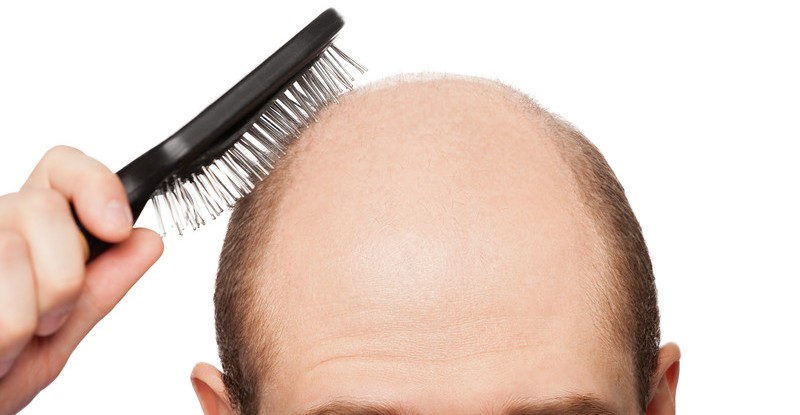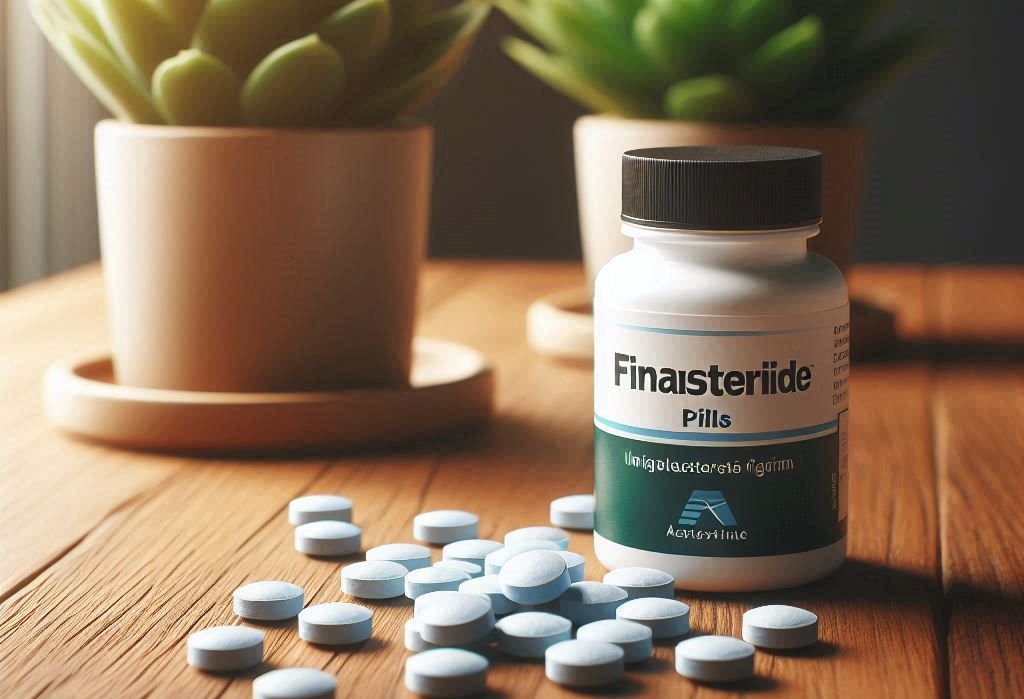Just like Minoxidil, Finasteride was not originally designed to be a solution against hair loss. It is primarily used as a treatment against an enlarged prostate. But there where a lot of patients that started to see side effects from the treatment in the form of improved hair growth. This was a starting point for studies on the effect of Finasteride on male pattern hair loss. The outcome off the results were so positive that Finasteride is now an FDA-approved pharmacologic treatment for male pattern hair loss since 1997.
How does Finasteride work?
What Finasteride does is it reduces the production of dihydrotestosterone (DHT). DHT is an androgen, a sex hormone that contributes to the development of as male sex characteristics, such as body hair. But it can also make you lose your hair faster and earlier. Finasteride works so good that the result is that it can slow down, stop and even reverse the effects of male pattern baldness.
How to use Finasteride?
for both the oral and topical form it is recommended to take the Finasteride on a daily basis. In case of the oral treatment you should use 1 mg finasteride per day. You don’t need to take it with food as is often the case with other medicines. It is probably a good idea to set an alarm so that you don’t forget to take the tablets. If you for some reason forgot to take it and your dose was due more than six hours ago it is advised to skip the dose.
If you take the topical treatment you should use a dropper that is included with the product and apply 1 ml of the Finasteride solution directly to your scalp. The recommended frequency is twice a day. It is not necessary to rub the solution into the scalp. However it could help you to spread the solution across all the balding areas of the head.

When is it not advised to take Finasteride?
It is not advised to take Finasteride for hair loss in the following situations:
- You haven’t reached the age of 18 yet
- You have problems with your liver
- You are trying to have a baby
- You have bladder problems
Interactions with Other Treatments
Finasteride is often used in combination with other hair loss treatments to maximize results. One of the most common pairings is with minoxidil, a topical solution that stimulates hair growth by improving blood flow to the scalp. While finasteride reduces DHT levels to prevent further hair loss, minoxidil can help promote new hair growth—making the combination more effective than either treatment alone. Some users also incorporate ketoconazole shampoo, which has mild anti-androgenic properties and can reduce scalp inflammation. Emerging therapies like microneedling, PRP (platelet-rich plasma), and low-level laser therapy (LLLT) may also complement finasteride by stimulating hair follicles and improving scalp health. However, it’s essential to consult with a healthcare provider before combining treatments, as individual responses and sensitivities can vary.
Natural Alternatives to Finasteride
For individuals seeking a more holistic approach to hair loss, several natural alternatives to finasteride have gained popularity. Saw palmetto is one of the most well-known options, as it may inhibit the enzyme 5-alpha-reductase—similar to finasteride—potentially reducing DHT levels. Other supplements like pumpkin seed oil, stinging nettle, pygeum, and green tea extract are also believed to support hair health through anti-inflammatory and hormonal balancing effects. While these natural remedies are generally well-tolerated and available without a prescription, their effectiveness is typically less studied and less potent compared to prescription treatments. Nonetheless, they may offer a viable alternative for those who experience side effects from finasteride or prefer plant-based solutions. It’s important to consult a healthcare professional before starting any supplement regimen, especially if combining it with other treatments.
Finasteride vs. Dutasteride
Finasteride and dutasteride are both medications that treat hair loss by blocking the conversion of testosterone to dihydrotestosterone (DHT), the hormone largely responsible for male pattern baldness. However, dutasteride is considered more potent, as it inhibits both Type I and Type II 5-alpha-reductase enzymes, while finasteride only blocks Type II. This means dutasteride can reduce DHT levels more significantly—up to 90% compared to around 70% with finasteride. As a result, some users report better hair regrowth with dutasteride, especially in cases of advanced thinning. However, this increased effectiveness may also come with a higher risk of side effects, particularly sexual and hormonal ones. While finasteride is FDA-approved for treating hair loss, dutasteride is typically prescribed off-label for this purpose. Always consult a healthcare provider before switching or combining treatments, as individual responses and risk factors vary.

Personal experience with using Finasteride
My personal experience with finasteride started right after I got my hair transplant done. I wanted to do a hair transplant surgery at a young age (26). For this reason I was strongly advised to use Finasteride to stop the hair loss from progressing any further. So I decided to place an order for Finasteride pills on the internet on an asian pharmacy website. The reason I ordered them there is because they don’t even bother to ask for a doctor prescription.
About a 3-4 days after I started to feel a tingling sensation in the testicle area. A few days after that I constantly felt the need to take a pee and then when I arrived at the toilet I couldn’t do it. This scared me so much that I threw all the rest of the Finasteride in the trash can. These side effects where not worth it for me.
Minoxidilmax.com
A few years later I came across Minoxidilmax.com and I saw a product that contained 15% Minoxidil (what I was already using at that time) and 0,1% Finasteride. So this was the first topical version of Finasteride that I had ever came across. I looked up some information on the chances of side effects of the topical solution compared to the oral version. And according on user reviews that I came across the side effects on the topical version where almost non existent.
I decided to try the product and from this moment on until now ( a period of around 7 years) I haven’t experienced any side effects. My hair loss also hasn’t progressed any further. The only downside of the product is that it does take some time to dry. For this reason I only apply the lotion one time a day. It just doesn’t work for me if I have to leave the house for work in the morning while my hair is still wet and covered with Minoxidil. So I only apply the lotion to my scalp before I go to bed and even though I only take 50% of the recommended dosage I still get amazing results.
Since I am overall such a satisfied customer I started this website to show people that you don’t have to accept baldness. I just wanted to point out that there are definitely treatments out there that can bring you satisfying results.











Pingback:Hair loss Facts or Myths - Minoxidil-products
Pingback:Pyrilutamide(Pyripure) info - Minoxidil-products
Pingback:Hair transplant info - Minoxidil-products
Pingback:Hair Loss in Women: Causes and Solutions - Minoxidil-products
Pingback:The differences between oral and topical Finasteride - Minoxidil-products
Pingback:Top 10 DHT Blockers: The Ultimate Arsenal Against Hair Loss! - Minoxidil-products